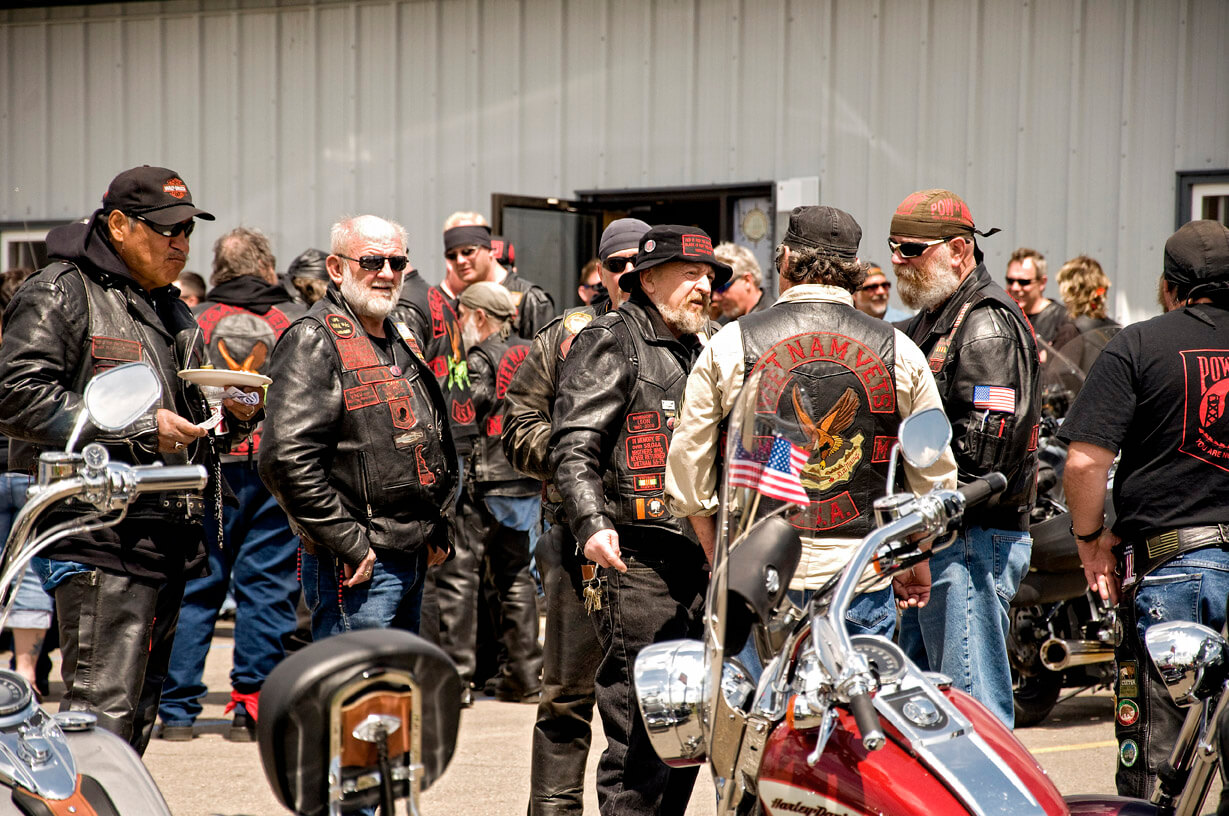And I can’t pinpoint how.
I am similar to a bowl of ethnic soup that delivers an unexpected, pungent aftertaste.
You can’t quite identify the spice responsible.
You aren’t sure if you even like the soup.
But you finish the bowl, nonetheless.
How am I slightly off?
Am I graceless? Mulish? Ungainly?
I gave up trying to isolate the source of my “foreignness,” I started to embrace it, and I stopped concealing aspects of myself.
In essence, I became more authentic.
Once I did so, a funny thing happened.
My connection with clients deepened. It flourished. I was able to build client trust swiftly.
A No-win Situation
Numerous years ago, I presented to a group of Vietnam Veterans. These vets also happened to be hardcore bikers.
My objective was simple: Tell them something that was going to enrage them.
I was tasked to inform these gentlemen that the Vietnam memorial, the one they hold sacred (the very memorial that stood 50 feet from the room I was presenting in), was about to be transferred from private ownership to state ownership.
Once they processed this fact (hopefully without trashing the conference room), I was to pivot and convince them why this ownership change was beneficial to them.
Doc Westphall built the memorial after his son died in Vietnam.
Doc had become a mentor to thousands upon thousands of Vietnam veterans (including the veterans I was presenting to).
He was revered.
His memorial was sacred; the grounds were sacred.
The veterans have a saying about the memorial, “Our names may be in D.C., but our hearts are in Angel Fire, New Mexico.”
And now the New Mexico Park system was going to purchase the memorial.
(I had images of rotund American tourists starting campfires close to the memorial to prepare a couple of Jiffy Pops.)
The Morning I Arrived at the Memorial We Had Nothing in Common
I had a new yellow Oxford shirt on for the meeting.
The only leather I donned was my belt.
To me, the most controversial thing Jane Fonda ever did was sport her workout leg warmers.
I never earned patches; he was adopted from the Anti-Cruelty Society.
I was scared of motorcycles.
The veterans were scary and hairy.
Am I in physical danger?
How was I to connect with them?
Build client trust?
How to Build Client Trust through Authenticity
I was out of place.
I was out of any type of comfort zone.
Had there been university safe spaces back then, I would have fled to one.
When the park supervisor introduced me at the start of the meeting, she forgot I was from Illinois.
She introduced me as Pete from one of the I-states (Illinois, Indiana, Iowa).
I didn’t even have a home state. I had my name and, um, a tri-state region?
Naked to the world, I had no idea how I was going to pull this meeting off.
I was forced to be myself, warts and all.
And my true self kicked in: I happen to be a curious, caring fellow.
Before the meeting, as each veteran walked in, I asked him about his bike, his vest, his experiences at the memorial.
I thanked each for his service.
My discomfort was noticeable.
I said some dumb things, some awkward things.
And I knocked over a guy’s coffee.
I was a tri-state fool. I was slightly off.
It seemed I was blowing any potential to build client trust.
And I was embarrassed as I started the meeting.
And Then…
For some reason, they immediately accepted me wholeheartedly.
I was not a hotshot.
I was someone who showed genuine interest in them.
Maybe they had always been misunderstood.
Perhaps their gruff appearance prevented others from engaging with them.
And they were pleased by my curiosity and genuine compassion.
I stumbled upon a way to build client trust.
In a way, I was forced to be authentic.
And I later attributed my authenticity to the capacity to quickly build client trust.
I realized I spent too much time in my life trying to be someone I wasn’t.
Today, I allow myself to be a bit more authentic, much to the dismay of my family and, occasionally, a co-worker or two.
The Obvious Limitation of Authenticity
Michael Schrage points out a perceived weakness of authenticity in When Authenticity Does More Harm Than Good.
He states:
Authenticity—defined as the degree to which one is true to one’s own personality, spirit, or character, despite external pressures—seems less a managerial necessity than a narcissistic tendency.
Mr. Schrage continues by equating authenticity and beauty.
Both are in the eyes of the beholder.
What one person considers authentic, another person considers it arrogance.
I see his point. I cannot show up in sweatpants and curse because that is “my authentic self.”
So, to temper and define what I mean by authenticity, I see it as how consumers define it in Cohn & Wolfe’s New “Authentic 100.”
Consumers define authenticity as having three key drivers: Reliable, respectful, and real.
I Am a Bit Off
Perhaps James Hollis comes closest to providing me a great call to authenticity:
We are not here to fit in, be well balanced, or provide exempla for others. We are here to be eccentric, different, perhaps strange, perhaps merely to add our small piece, our little clunky, chunky selves, to the great mosaic of being. As the gods intended, we are here to become more and more ourselves.
I actually do know why I am a bit off: I am clunky and a bit strange.
And when I expose my clunky self, it expedites my facility to build client trust.
I always leave the sweats at home, to the relief of the big boss.
